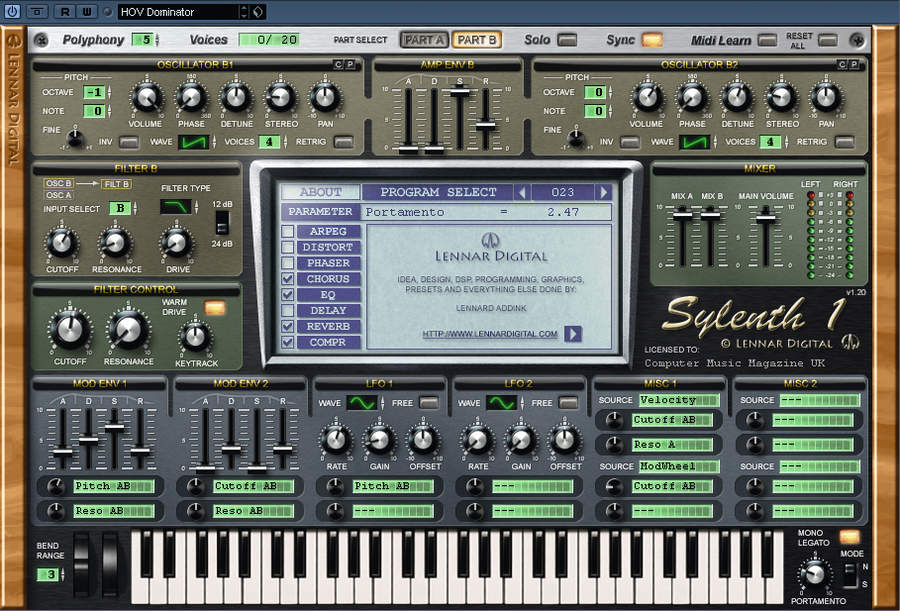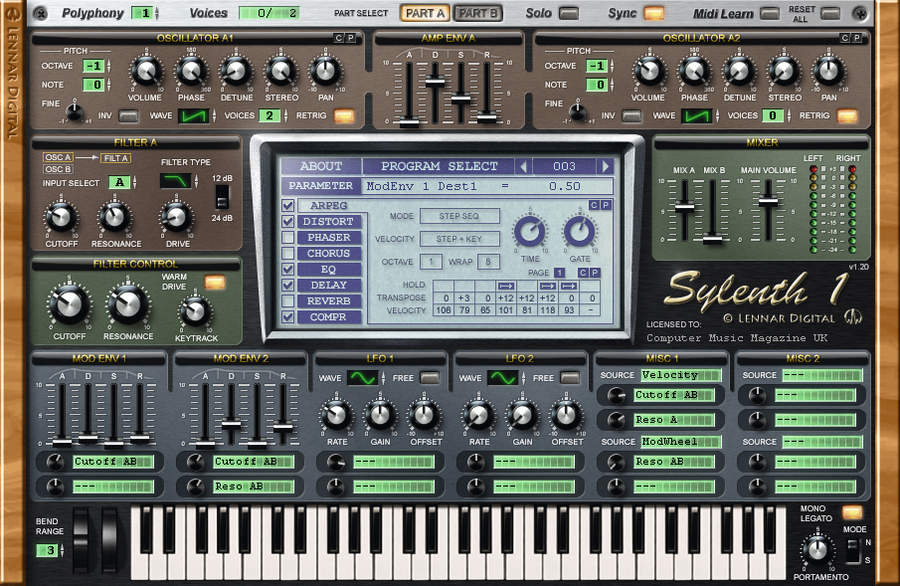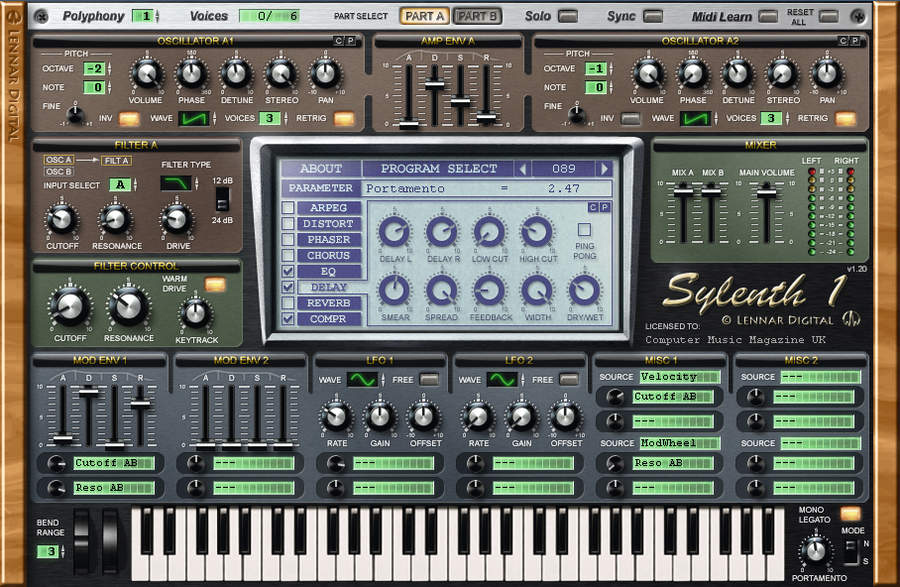MusicRadar Verdict
Out of nowhere, Sylenth1 has instantly become one of the go-to instruments in our plug-ins folders. LennarDigital surely have one of the underground releases of the year on their hands.
Pros
- +
Incredible sound. Fantastic, useable presets and great effects section. Reasonably priced. Extremely easy to use.
Cons
- -
No dedicated PWM. Maybe too straightforward for some. No Mac version (yet).
MusicRadar's got your back



On the face of it, there's really not so much interesting about Sylenth1: it's yet another virtual analogue subtractive synth with a few oscillators, a couple of filters and a pretty basic modulation section. We've seen dozens of synths with similar feature sets - many of them freeware - so you're entitled to ask why you should bother with this debut offering from newcomers LennarDigital at all.
The answer becomes obvious within a few seconds of loading it up: Sylenth1 sounds absolutely incredible; it's rich, detailed and full of analogue-style warmth. While we find that many of the synths we review come with presets that fail to show off the instrument's true capabilities, Sylenth1's default bank is superb. A wide variety of sounds are on offer, including some beautiful impersonations of classics such as the TB-303, Alpha Juno and MiniMoog. While we wouldn't go so far as to claim that these emulative patches are 100% accurate, they're certainly authentic enough to be of use and - most importantly - they sound simply gorgeous.
Top features
There are plenty more treats in the preset folder too, including an excellent staccato string ensemble, a chunky electro house bass (cheekily titled Exceeder) and a super-smooth evolving pad.
As well as sounding great and being truly inspirational, Sylenth1's presets also do a great job of showcasing the synth's more functional side. This instrument just begs to be tweaked, and when you do so, things get even better. The straightforward interface makes working out what's going on with each patch a doddle, and there are no unnecessary interface elements to confuse matters. This makes tweaking existing presets a breeze and ensures that Sylenth1 is also ideal for the less experienced synthesist.
As well as the presets, you also get a bank full of initialised patches. These are ideal blank starting points for programming your own sounds, and it's when you do this that Sylenth1 really comes into its own. Four oscillators are on offer, though only two are displayed at any one time. While this is a slight annoyance, toggling the oscillator view is as simple as clicking the Part A or Part B button, and you can at least copy and paste oscillator settings.
Each oscillator gives you a choice of eight waveforms, but the real highlight is the outstanding unison facility. You can independently assign a number of voices per oscillator, from zero (ie, oscillator off) to eight, and the Detune and Stereo knobs make it easy to produce those big, beefy analogue patches. There's no dedicated pulse width modulation, but the manual tells how you to recreate the same effect using two oscillators and a little phase modulation, with convincing results.
After the oscillators you get a standard ADSR, then the filter. Each of Sylenth1's Parts has its own filter, and this can be set to receive the output from the other Part's oscillators too. So, for example, you could have Part A's filter set to high-pass and Part B's set to low-pass, and then route the output of both sets of oscillators to both filters. While this might sound quite flexible, it's sadly not possible to route the filters in series (something for a future update, we hope).
The filters sound terrific. There isn't exactly a multiplicity of modes - low-pass, high-pass and band-pass are all you get - but there are 12dB and 24dB options for each type (you also get a Drive control for each filter). The global Filter Control panel, meanwhile, features a Cutoff knob for adjusting both filters' cutoff frequency, a Resonance control that operates in a similar manner, and a handy Keytrack control. Finally, there's a Warm Drive button to add subtle colouration to the effect of the Drive knobs.
Further options
Aside from the effects section, all that's left to consider in Sylenth1 are its modulation options. The modulation sources include two envelopes, two LFOs and four assignable slots that can be set to the envelopes, LFOs or MIDI controller data. Each modulation source has two destinations with assignable amount controls, so there are plenty of routing possibilities. On the downside, the envelopes and LFOs are pretty simple - being able to trigger the LFOs from a note-on message would be a bonus (again, this would make a good addition in an update,, but at least you can sync them to host tempo or let them run free.
As you've no doubt surmised by now, Sylenth1 doesn't have many of the features you'll find in more complex synths, but it's an instrument we think we'll return to again and again. What it lacks in tweakability it sure as hell makes up for in raw sonic firepower - this synth really does sound awesome, and it's so easy to program that it can sometimes feel like you're cheating somehow. Once you've got a half-decent patch on the go, it seems that nothing can go wrong - every knob you turn elicits some captivating new tone, and the range of sounds that can be conjured up with just a few simple controls is astounding.
Sylenth1 is absolutely recommended to anyone who uses a lot of bread and butter sounds from virtual analogue synths. It sounds better than 99% of the competition and, to our ears, it even rivals Access's famous Virus. While Sylenth1 doesn't quite have the lush sound of that instrument, on the whole it compares very well - amazing when you consider how little CPU power it requires. In a word: fantastic.
Computer Music magazine is the world’s best selling publication dedicated solely to making great music with your Mac or PC computer. Each issue it brings its lucky readers the best in cutting-edge tutorials, need-to-know, expert software reviews and even all the tools you actually need to make great music today, courtesy of our legendary CM Plugin Suite.










